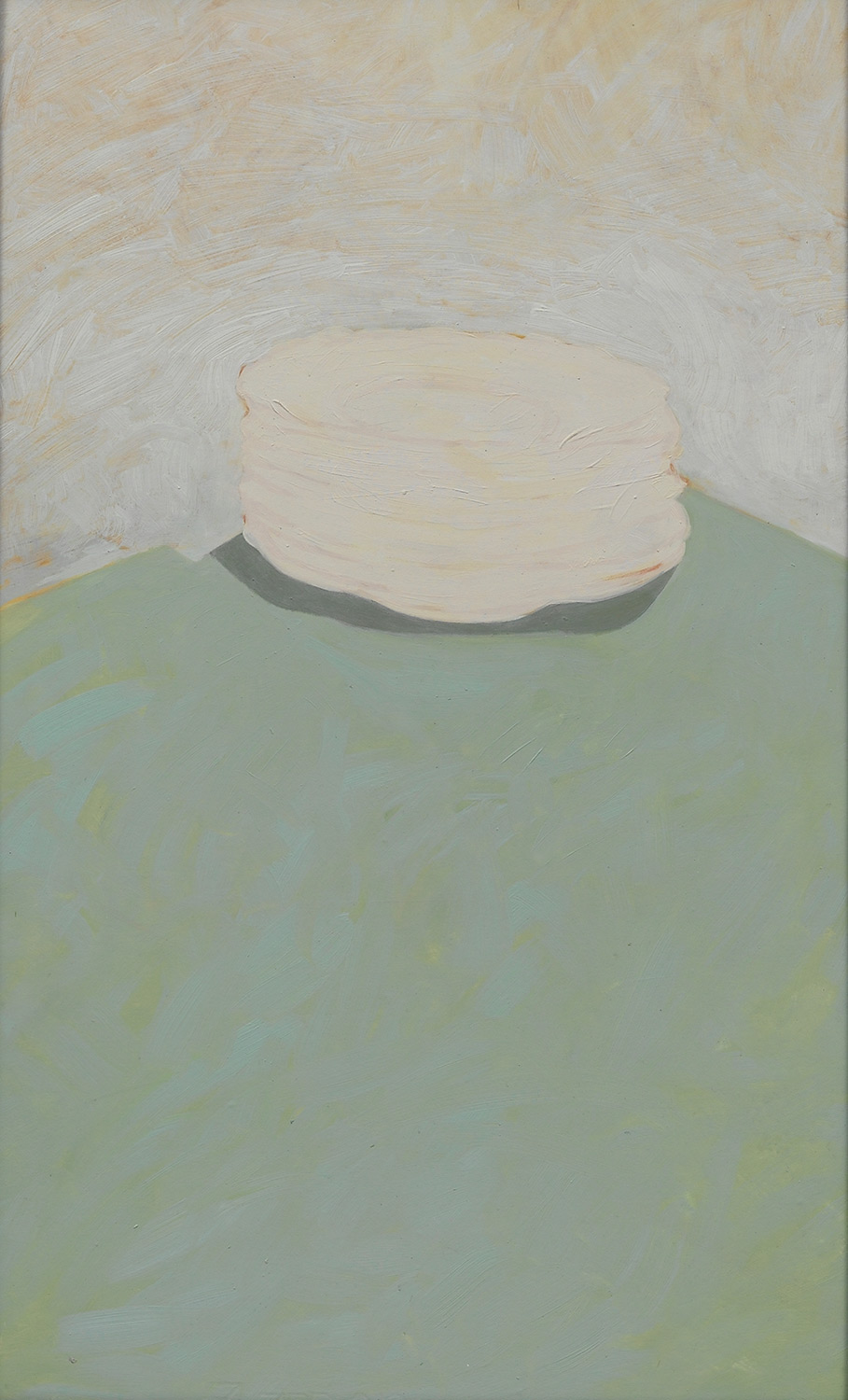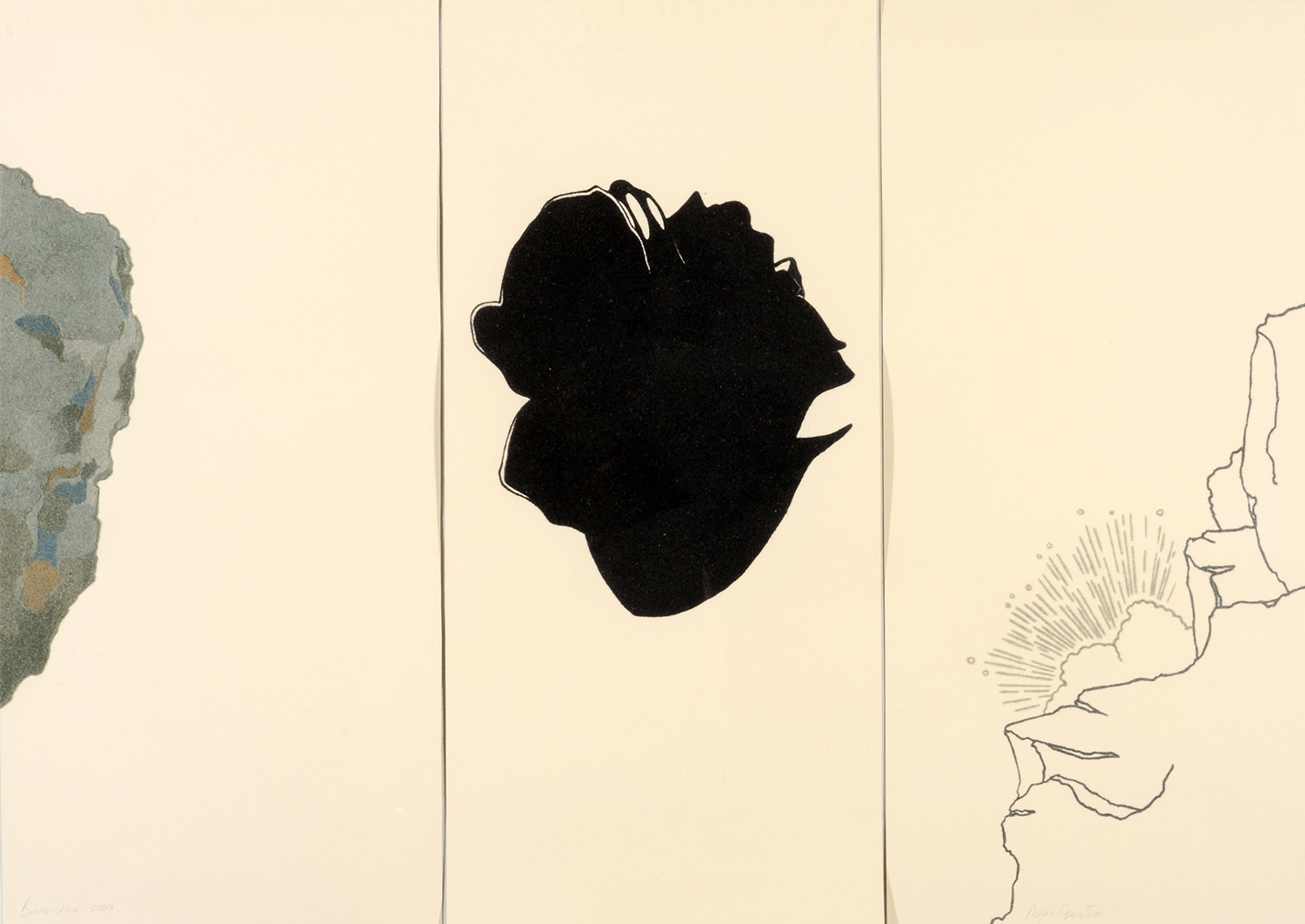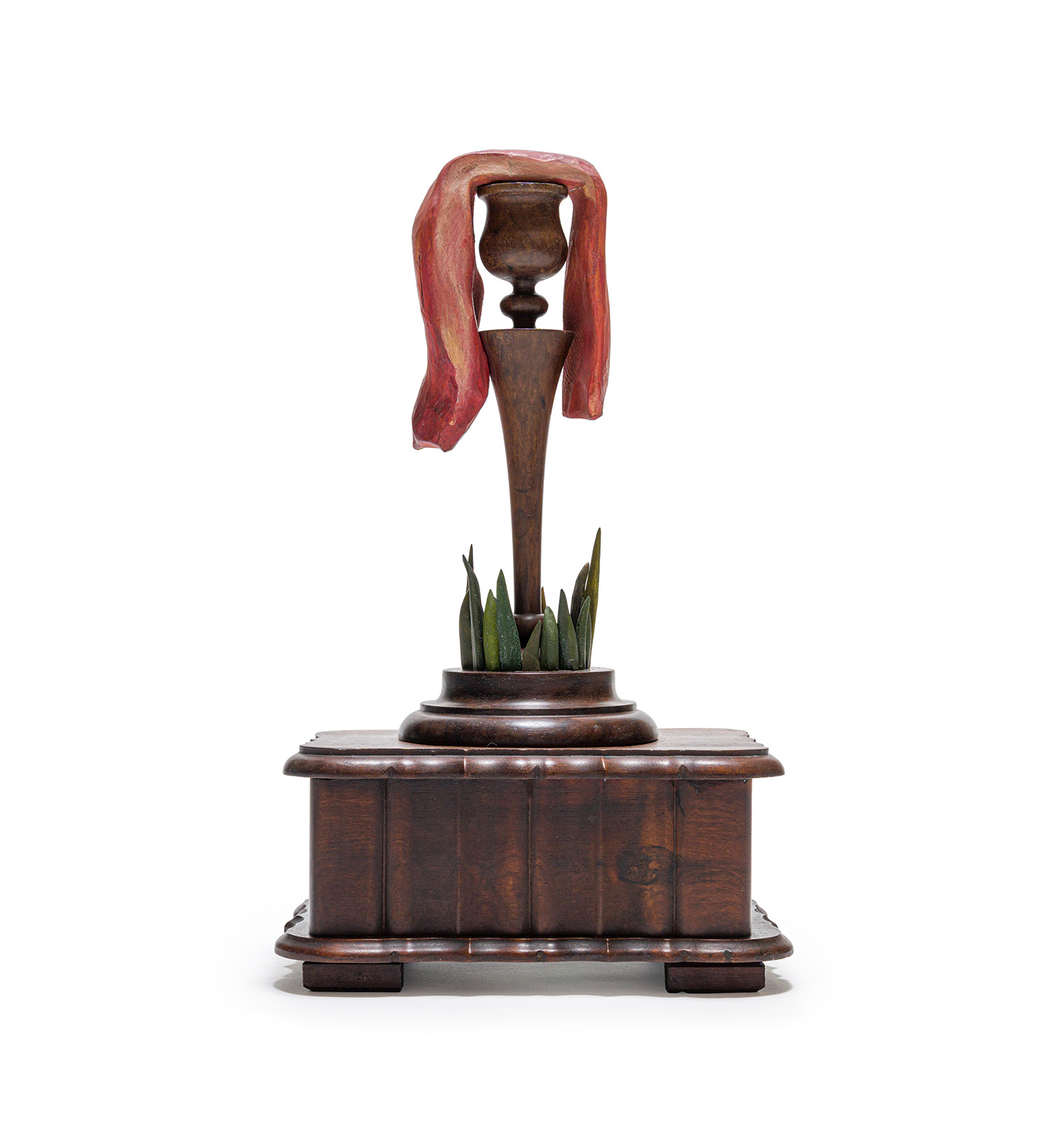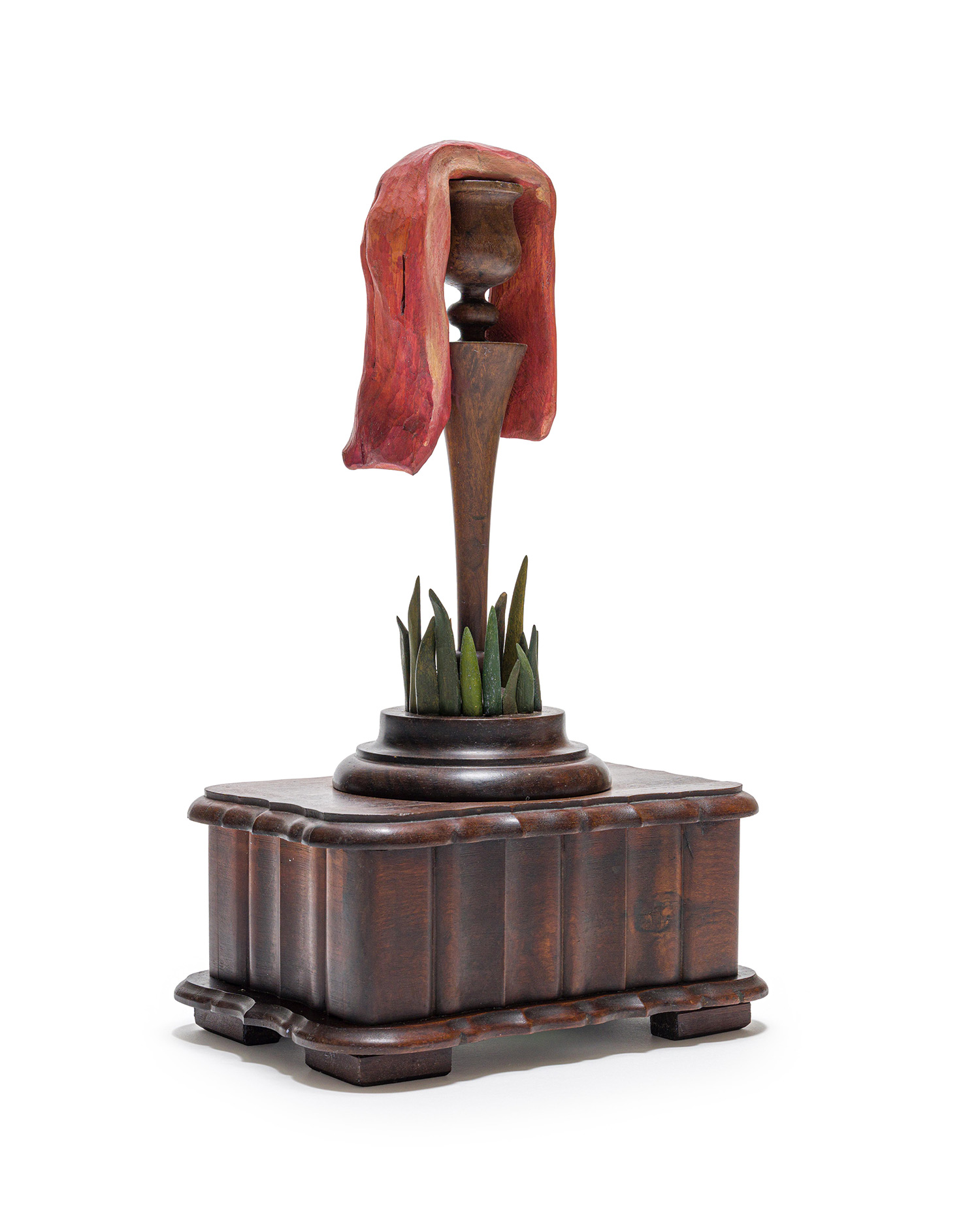BONITA ALICE (b. 1962)
Still Life
oil on canvas
1987
Still Life (1987) is an oil painting that features what could be a pile of white plates precariously balanced on the corner of a table. The muted hues of this painting and the slightly indeterminate shape of the plates bring a strange, otherworldly mood to what would otherwise be a very familiar, homely scene, rendering it strange and at a remove.
Night Operation – Triptych
2010
wool, dust and archival glue on paper
80 x 100 cm
At once abstract and atavistic, this work subtly calls into question the line between ideas and reality – what we think of as solid, fundamental, earthy and what we think of as a dream, a shadow, a passing cloud. Things are not what they seem. Strange, indeterminate shapes are a feature of Night Operation (2010), a triptych made from wool, dust and archival glue on paper. The outline in the right panel of the triptych alludes to light illuminating a cloud just emerging from a craggy mountainside. The middle shape alludes to a rock, but could also be a shadow, while the shape on the left recalls prehistoric stone tools.
Remainder
1997
wood
size unknown
In the sculpture Remainder (1997), a floppy form that resembles a tongue is held aloft by a wooden candlestick on a carved wooden box. A circle of succulent leaves sprouts from the base of the candlestick. In its totemic quality, it alludes to belief, tradition and institutions of lineage and power. This magnetic and intriguing work has Surrealist overtones and leaves the viewer with more questions than answers. The tongue drooping from the pinnacle of the piece is a mystery, referring perhaps to the failure of language to adequately express some of the weirder, more unexpected and difficult aspects of human experience.
BIOGRAPHY
Bonita Alice works in both two and three dimensions. The focus of her practice is the way we relate to other animals and the natural world more broadly. She is concerned with how human behaviour within that relationship reflects our own complex, often unhealthy, interior workings. For Alice, as for many others, the protection of other animal species and of the Earth’s ecosystems is a matter of social justice. She regards our exploitation and ill treatment of the natural world as reflecting the abuse of unequal power within the human realm.
Alice was born in Johannesburg. She received her BAFA from the University of the Witwatersrand in 1984 and her MFA in Sculpture from Michaelis School of Art, at the University of Cape Town, in 1990. She lectured in Sculpture for a number of years before returning to full-time studio practice in 2004. After living in London for 13 years, she is currently based in Cape Town.
As a sculptor, she works primarily as a carver of wood, having trained at Wits under the late sculptor, Peter Schütz. She also works in woollen dust on paper, a medium she developed in the early 2000s, and which she regards as an extension of her sculptural practice. The dust medium suggests something fragile, impermanent and unclear; and also a kind of softening or cushioning, ‘for those who need gentle handling, or protection from difficult truths’.
Alice’s images often tend toward the decorative, influenced by historical Japanese, Chinese and Indian prints and paintings, in which even the harshest or most violent subjects are rendered in a delicate and carefully composed manner. ‘The combination of the violent and the decorative heightens the pain.’
She is also known for a series of large scale temporary land installations using anamorphic perspective which addressed the idea of the transience of all things.
Her work is included in numerous private and public collections, including the Johannesburg Art Gallery, South African Reserve Bank, Standard Bank, Durban Art Museum, UNISA Art Museum, Wits Art Museum and the SABC.





